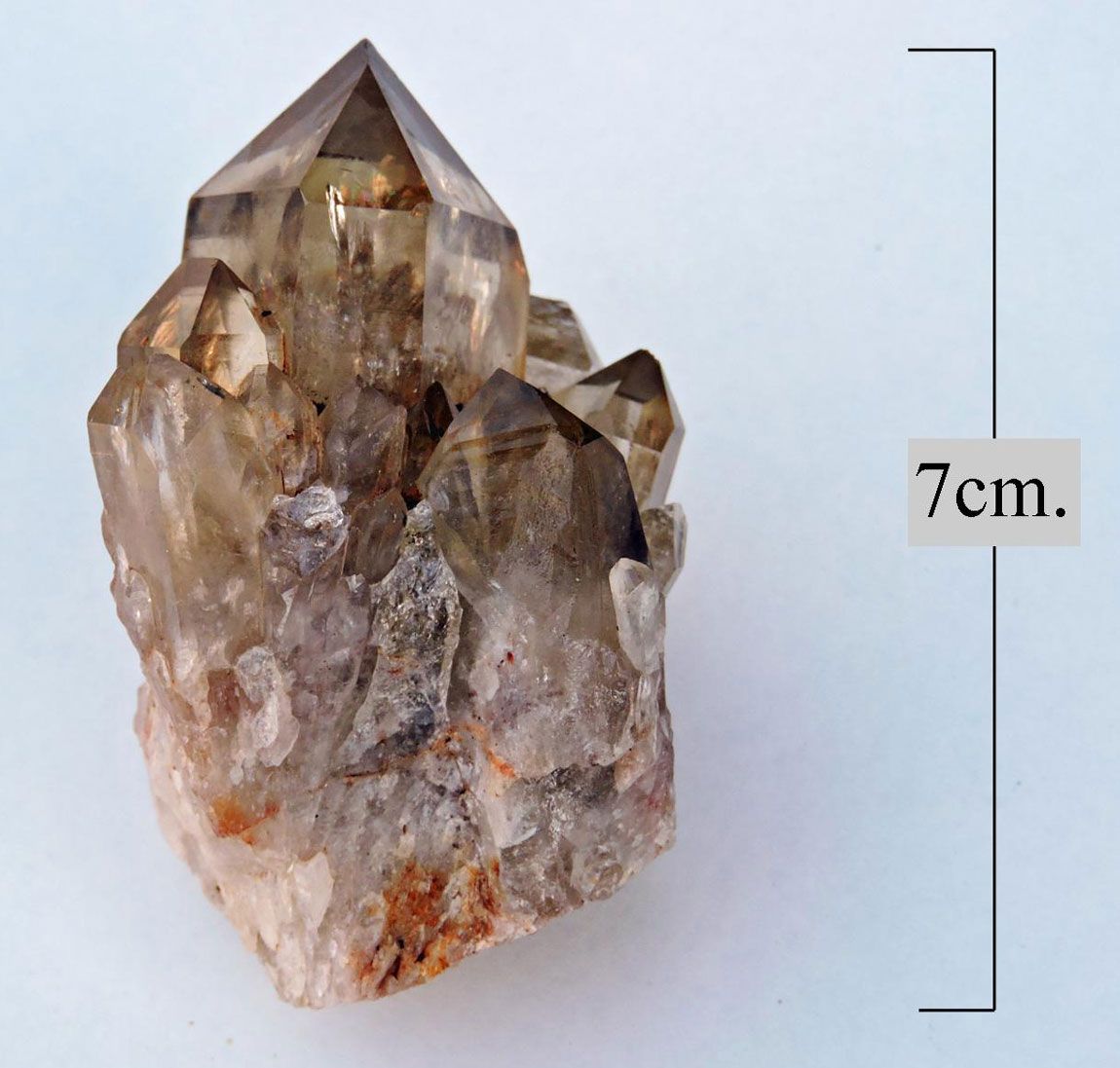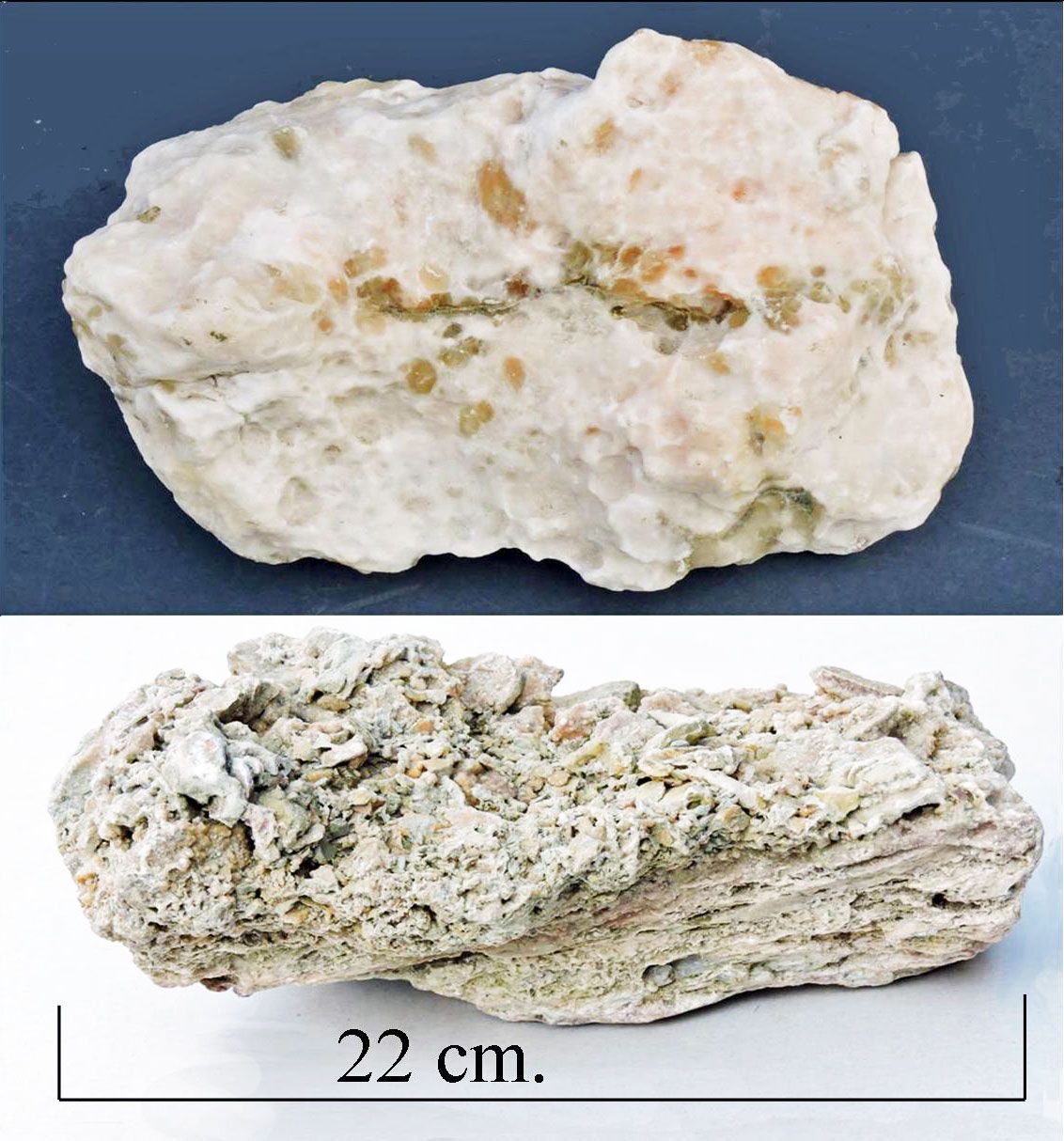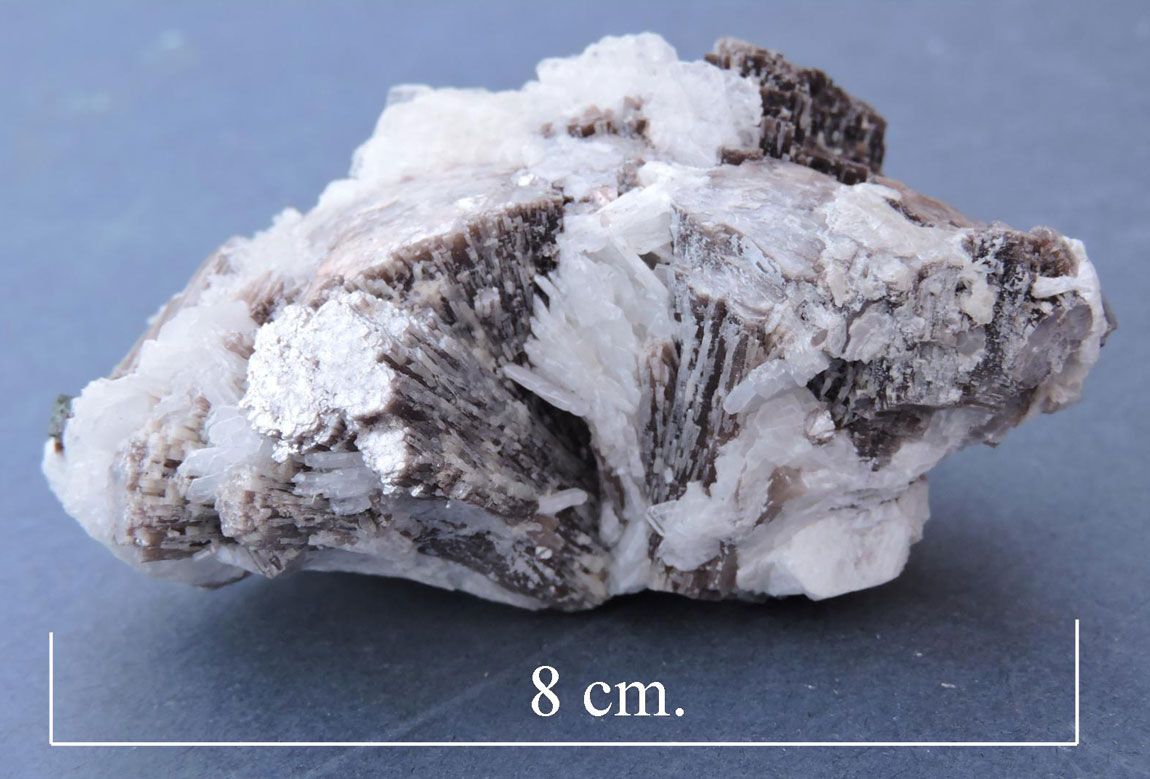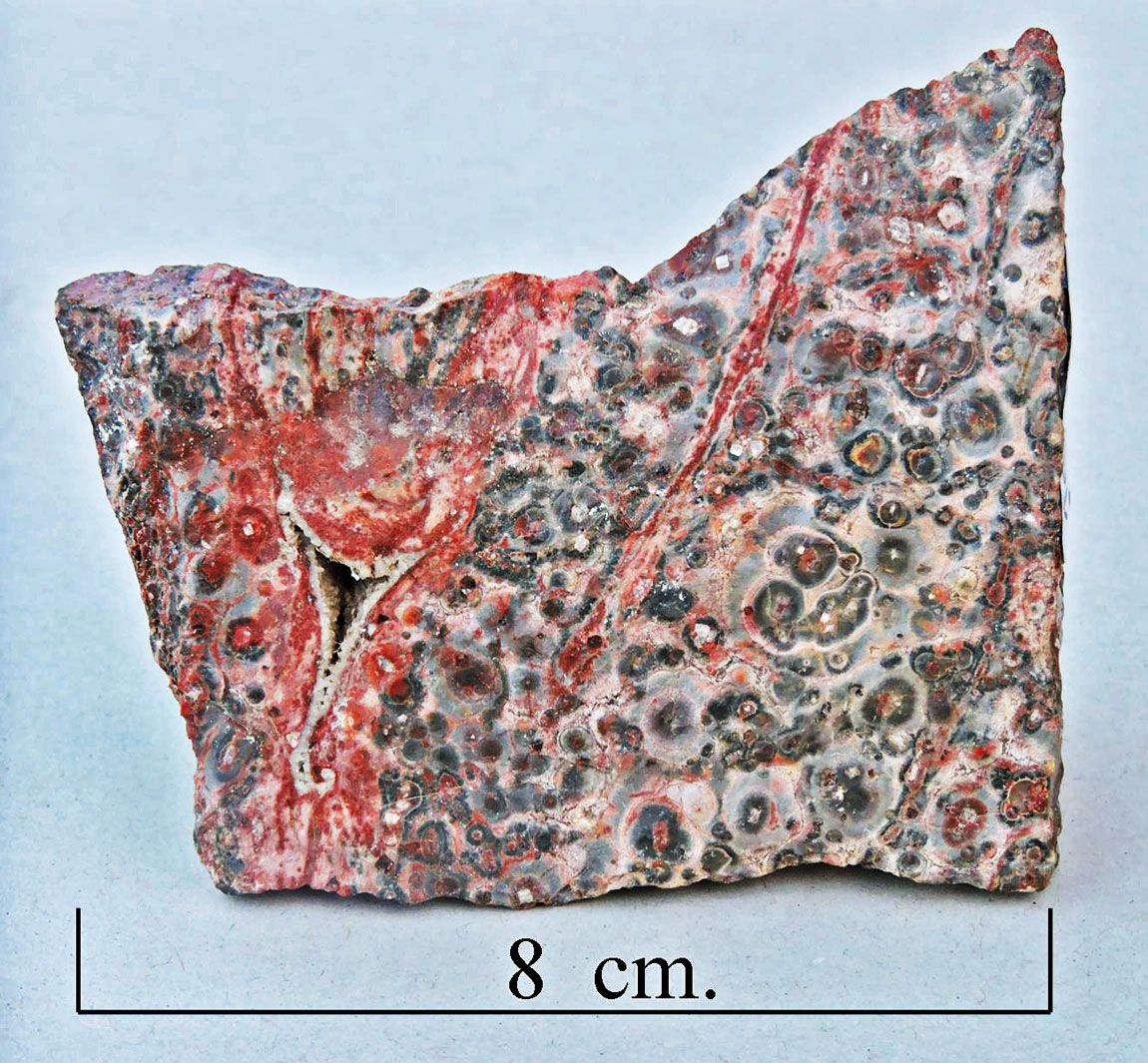
Bauxite, Garrone, France.
Temporarily listed in the mineral collection, Bauxite is actually a rock that is the main ore of aluminium.It is composed of the aluminium minerals, gibbsite, bohemite, and diapsore, with two iron oxides, haematite and goethite. It is also a source of gallium. The pisoliths in the specimen have a pleasing visual effect. From Garrone in France, I obtained the specimen to illustrate minerals and their source to a class of school children.



